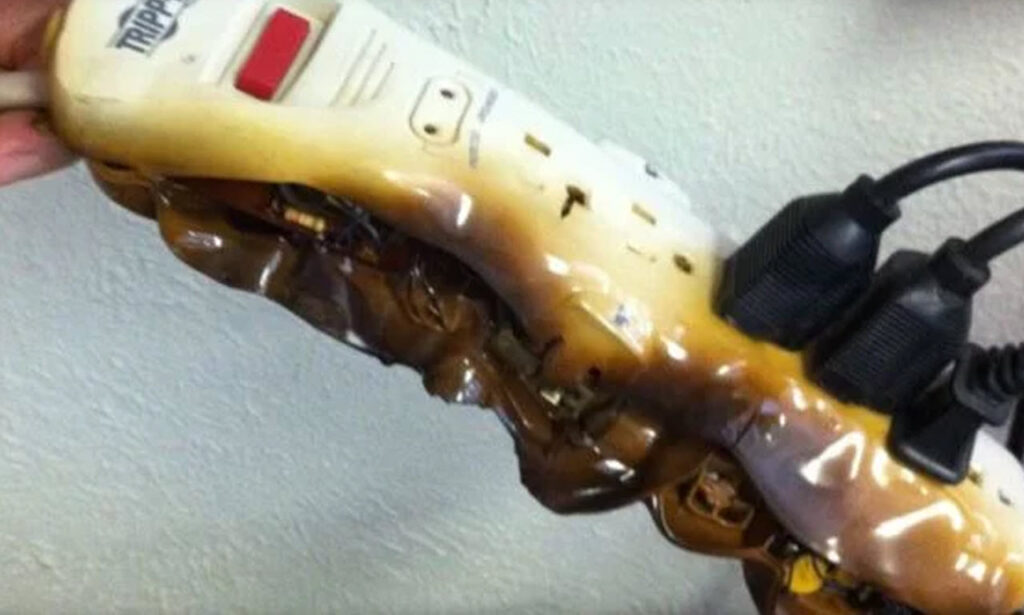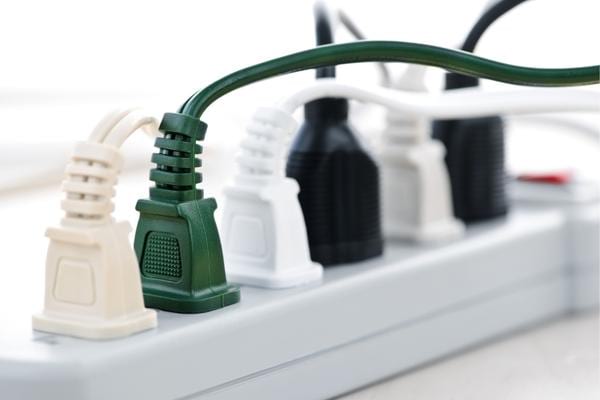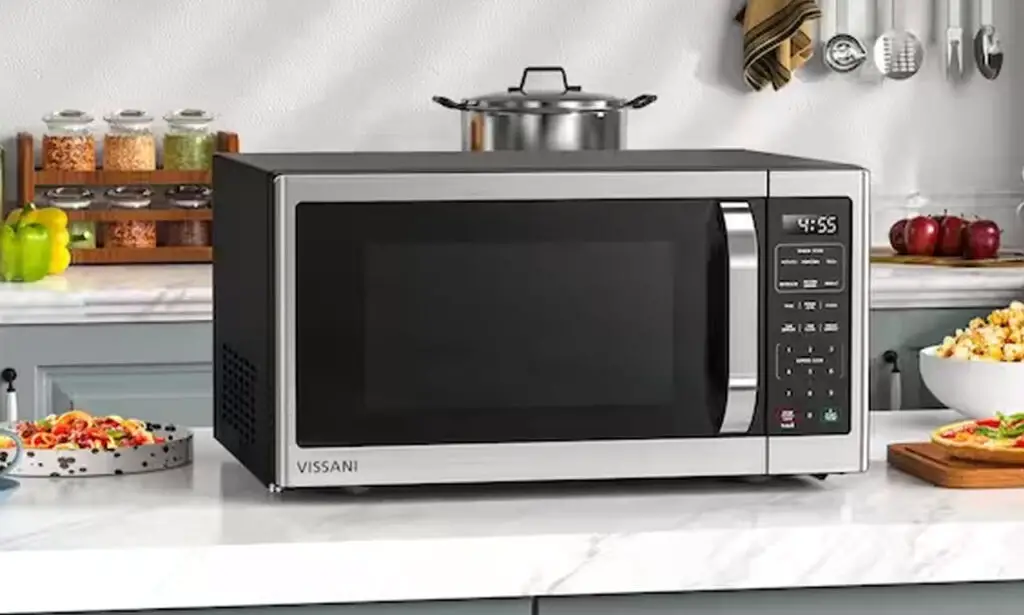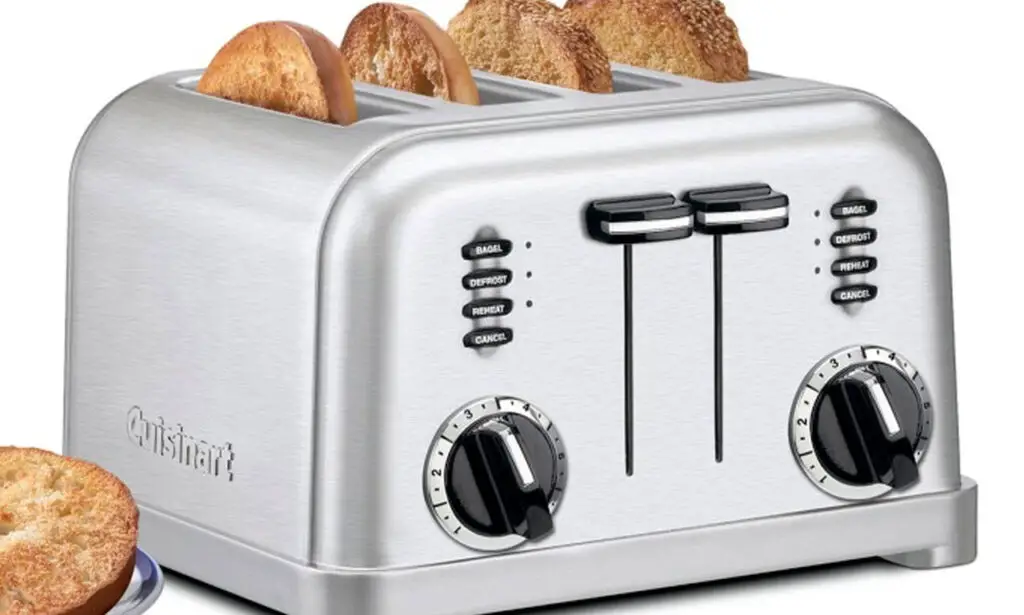
When we think of the past, one of the first thoughts that runs through our mind is how people lived without electricity. Nowadays, we can’t even imagine a day without it because all of our appliances and devices run on electricity.
The truth is, however, that most homes don’t have enough power outlets to keep everything running and charged, so most of us rely on power strips without being aware that appliances that consume a lot of energy become dangerous fire hazards when we plug them into a power strip.
Although power strips are the thing to go to when it comes to charging your phone or power an entertainment setup, there are certain devices that should never be plugged into a power strip.
Air conditioners, space heaters, toasters, and other appliances that use high wattage can easily cause power strips to overheat, which can easily lead to a fire hazard.

Even before plugging anything into a power strip consider the ammount of power they support. This is usually listed on the product itself.
High-capacity appliances need to draw a lot of power through an electrical circuit to work. Keep in mind that an appliance does not need to be large in size to draw large amounts of power.
Below is the list of appliances that should never be plugged into a power strip.
1. The oven: Even though the oven is not used continually, it is a power-hungry appliance that should not be plugged into a power strip. In fact, it should be plugged into its own wall outlet on its own circuit.
2. Refrigerator: Refrigerators require a lot of power and frequently cycle on and off which can easily overload a power strip and cause damage. Much like the oven, refrigerators require a wall outlet dedicated solely to powering the appliance.

3. Washing Machine: When turned on, washing machines pull a lot of power. This is the main reason why these appliances shouldn’t share a receptacle with any other appliance or device.
Most washing machines use a max of up to 1400 watts, putting it dangerously close to the max load of most power strips. On top of that while working, washing machines are usually left unattended and work longer hours, at least an hour, which is long enough for a power strip to overheat.
4. Heating: Portable heaters should never be plugged into a power strip because most of them use 1,500 watts of energy on their high setting and they usually run for extended periods of time.

5. Microwave: Since they consume a lot of energy when used, most microwave ovens are plugged into their own receptacle and that is always a good practice.
6. Coffee Maker: Those who own a coffee maker are not fully aware of the power these appliances use, and this is why they should never be plugged into any sort of power strip or extension cord.

7. Toaster: You may think that browning up slices of bread or bagels doesn’t require a lot of energy, but the truth is that toasters use a lot of energy when in use and they should be plugged directly into the receptacle rather than a power strip.
8. Another Power Strip: Power strips are not meant to be used in conjunction with another power strip, although many people do exactly that. This, however, violates most safety codes because it can easily lead to overloading the electrical system.
9. Electronics (Computer, TV, Router): These types of electronic devices don’t necessarily use a lot of power on their own, but they are sensitive to surges and you can find yourself with a burnt out computer or TV very quickly if you plug them into a power strip.
If you want to protect these sensitive devices from power surges, opt for a power strip that functions as a surge protector.
A woman converts a Boeing 747 into a fully functional home.
Buses, tiny houses, and shipping containers have all become popular building materials for one-of-a-kind homes.
These affordable substitutions for conventional housing provide the same level of comfort and a variety of customization options.
Jo Ann Ussery, on the other hand, designed her own unique home before it became popular.
She bought an old Boeing 727 and turned it into a lovely house.
Wonderful housing.
When Ussery’s home in Benoit, Mississippi, was destroyed in 1993, her adventure officially began.
She and her two kids needed a place to live because her husband had unexpectedly passed away, but they weren’t wealthy.
She had believed that purchasing a trailer would make all of her problems go away, but she soon realized she couldn’t afford a house big enough to accommodate her enormous family.
Ussery’s brother-in-law Bob, who works as an air traffic controller, suggested they try living aboard a plane.
Ussery was drawn to the idea and visited a Boeing 727 that had been disassembled for its parts.
Despite the piece’s $2,000 price tag (including shipping), she fell in love at first sight.
Ussery nicknamed her private Boeing 727 “Little Trump” after learning that Donald Trump also owned a private Boeing 727.
She started her expensive and time-consuming home improvements right away.
Less than $30,000 (or about $60,000 in modern currency) went toward the renovation.
While she worked on the inside, she needed to make sure it stayed in its current position.
Ussery made use of the lake that was already present on her property by bringing the plane down with its nose over the water. To achieve this specific goal, a sizable amount of concrete was used to secure the tail. The interior, which was roughly 1,500 square feet, was immediately demolished by her.
The aircraft measures 138 feet in length and has 76 windows.
Although the aircraft’s windows weren’t functional, as is typical of commercial aircraft, she wasn’t bothered by this because the air conditioning was working.
She upgraded the insulation and put in new flooring. What specific components of the original 727 were kept?
It is a brilliant idea to only have one airplane bathroom and overhead bins for your belongings.
The interior design.
Ussery was able to concentrate on the finer details and improved comforts once the significant changes were finished.
The remodeled jet had three bedrooms, a living room, a kitchen, and even a laundry room.
The washer and dryer were there, but it also had a phone and an oven.
Without a doubt, Ussery’s work on the cockpit’s view of the lake was the most significant improvement.
It was transformed into a royal master bathroom with a soaking tub by her.
She designed the room’s layout to give everyone who was in it the sensation of floating.
The renovation was completed entirely by Ussery, which is especially noteworthy.
Before deciding to make her converted plane into a public museum, she lived there from 1995 to 1999.
Sadly, after being transported a short distance, it fell off the carriage and collapsed.



Leave a Reply